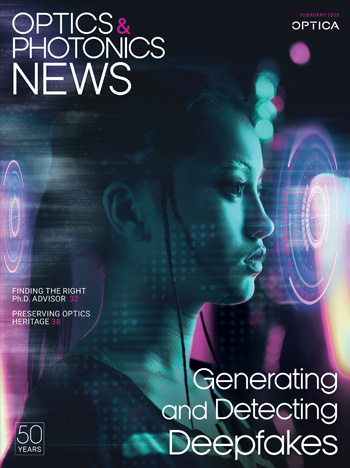
July/August 2011 Issue
Feature Articles
Rare Earth Elements: High Demand, Uncertain Supply
Rare earth elements are garnering global media attention due to their potential role in clean energy technologies. But these elements—which have enabled spectacular innovations in optics over the past decades—are now subject to unprecedented price shocks due to uncertainty around future supply. What does this mean for the optics community?
by Marcius ExtavourOptogenetics: An Illuminating Journey into the Brain
Through the fascinating new study of optogenetics, researchers can use light to control brain cells that have been genetically engineered to respond to specific wavelengths. This rapidly evolving field is helping to demystify how neural circuits function.
by Sally Cole JohnsonDNA as an Optical Material
DNA, the beautifully symmetrical “molecule of life,” carries the core genetic blueprint for every living organism. Now, through the emerging field of DNA photonics, it also has the potential to serve as an inexpensive, renewable resource in the development of optical waveguides, organic LEDs and laser structures.
by A.J. Steckl, H. Spaeth, H. You, E. Gomez and J. GroteThe Extreme Light Infrastructure: Optics’ Next Horizon
The Extreme Light Infrastructure—a project involving nearly 40 research and academic institutions from 13 EU member countries—will allow researchers to probe laser-matter interaction at unprecedented intensity levels.
by Gérard Mourou and Toshiki TajimaOptical Control through Light Transmission
The simple action of passing laser light through an optically transparent system may enable researchers to control a number of mechanical and optoelectronic processes. These novel interactions of light present an array of useful applications in optical switching, optical binding and fluorescence imaging.
by David S. Bradshaw and David L. AndrewsDepartments and Columns
Optical 3-D Gesture Recognition
With applications in gaming, business and beyond, 3-D optical gesture recognition technology uses light to turn human gestures into computerized data streams.
A Conversation with Rep. Ralph Hall
OPN talks with the U.S. chair of the House Science, Space and Technology Committee about R&D funding, America’s role in space, and how he is collaborating with the Obama Administration.
Boosting Precision and Stability of Optical Lattice Clocks
A Japanese team has learned how to improve the stability of an optical lattice clock by defeating one of the last remaining noise sources in the system.
Managing Up in Academia
Life as a graduate student or post-doc is full of challenges, whether they include learning complex scientific concepts, acquiring new technical skills, or managing your first large project. For some unlucky individuals, an academic position may also bring the trial of coping with a poor relationship with their advisor. Here’s what to do if it happens to you.
"Adopt-A-School" to Boost STEM Education
A pilot project in a Tucson school demonstrates how optical researchers and grad students can directly influence science education among today’s youth.
Visions of Invisibility in Fiction
Long before the advent of optical cloaking, authors of science fiction were imagining how it could work—-and making some good guesses in the process.
Presidential Profile: Van Zandt Williams
Van Zandt Williams was OSA’s 1966 President for just five months due to his untimely death—but he had a lasting impact on the Society, particularly in the areas of education and outreach.
Going for the Gold: Metallic Beetles Bring Bling
Researchers at the University of Costa Rica are studying how two beetles create the gold and silver on their backs.
Ship-Borne Laser Zaps Target a Mile Away
The Navy and Northrop Grumman recently tested the Maritime Laser Demonstrator (MLD), in which a ship-borne laser system disabled a small target boat.
Better Nanoparticle Detection with Optical Microcavities
Scientists have devised a technique for spotting beads with a radius as small as 12.5 nm in solution, and they have improved the signal-to-noise ratio for sensing the influenza A virus by a factor of 10.
ADVERTISEMENT
ADVERTISEMENT
Also in this Issue
OSA Today
President's Message
Book Reviews
In Memory
Remembering Willard S. Boyle and Giuliano Toraldo di Francia.

![Illustration of a synapse in the brain. [Getty Images]](https://opnmedia.blob.core.windows.net/$web/opn/media/images/articles/2025/0425/departments/202504-cover-web.jpg?ext=.jpg)
![Fiber draped around a hand, demonstrating its flexibility. [Photo by Z. Wang and L. Wei]](https://opnmedia.blob.core.windows.net/$web/opn/media/images/articles/2025/0325/departments/202503-cover-web.jpg?ext=.jpg)
